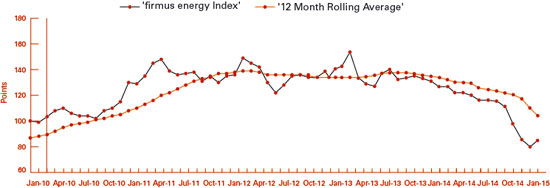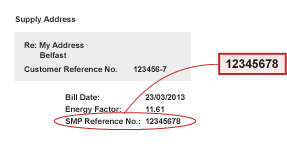The year-long decline in the wholesale cost of energy has come to an end. Increases in the price of oil, gas and coal last month lifted the firmus energy index by 13% per cent. It now stands at 91.
It was oil which was principally responsible for driving energy costs down and it is mainly because of oil that the trend has reversed. The cost of a barrel rose by around ten dollars last month as US shale oil companies took hundreds of rigs out of production. This upward curve in prices is likely to be curbed though by sluggish global energy consumption and a glut of oil. Despite the cutbacks in the shale industry, worldwide output is set to outstrip growth in demand this year.
Natural gas prices rose by nine per cent after the Dutch Government said it would restrict production in Europe’s biggest gas field. The authorities in the Netherlands decided to take precautions following a series of small earth tremors in the Groningen area. Having surged on news of the earthquakes, prices then retreated from their peak due to a combination of factors including the continuation of large flows of gas into Great Britain, warmer weather and the prospect of more LNG imports.

The cost of coal nudged up by three per cent over worries about supplies from Colombia and Australia. But an abundance of stocks kept prices in check.
February was a quieter month weather wise. That meant less production from Irish wind farms. Thermal power stations took up the slack but at a cost. Switching on plant for short periods is always expensive. That and an increase in the cost of imported gas pushed up the wholesale price of electricity in euro terms. Generators were happier though. The average clean spark or gas plant profit rose month on month by three euro a MWh.





